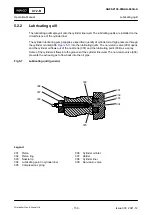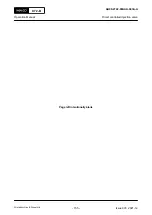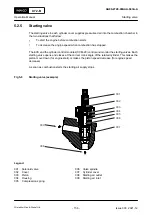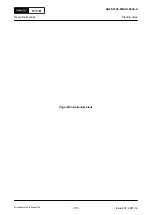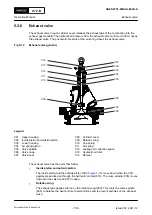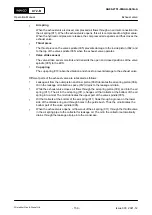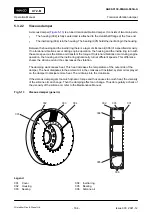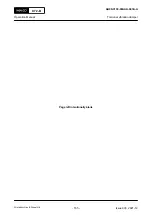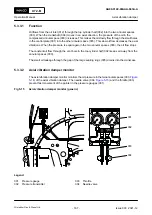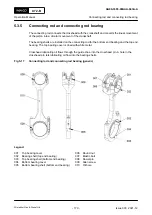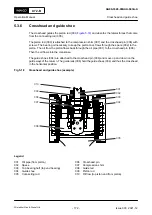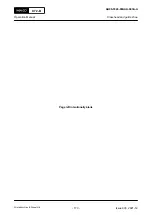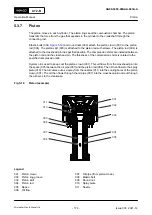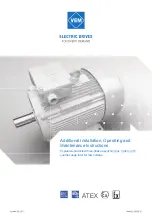
5.3.2.2
Viscous damper
) is a tuned torsional vibration damper. It consists of two main parts:
•
The housing (002) is fully sealed and is attached to the crankshaft flange at the free end.
•
The inertia ring (004) is in the housing. The bearing (005) holds the inertia ring in the housing.
Between the housing and the inertia ring there is a layer of silicone oil (006) of a specified viscosity.
If no torsional vibrations occur during engine operation, the housing and the inertia ring turn with
the same speed, as the silicone oil transfers the torque. If torsional vibrations occur during engine
operation, the housing and the inertia ring dynamically turn at different speeds. This difference
shears the silicone oil and thus decreases the vibration.
The damping work causes heat. This heat increases the temperature of the outer side of the
damper. The heat dissipates to the ambient air in the crankcase. If installed, system oil is sprayed
on the damper to dissipate more heat. The oil drains into the crankcase.
If the viscous damper gets too much dynamic torque and thus causes too much heat, the viscosity
of the silicone oil can change. Then the damping effect can change. Thus do regularly a check of
the viscosity of the silicone oil, refer to the Maintenance Manual.
Fig 5-13
Viscous damper (generic)
001
001
002
002
003
003
004
004
005
006
Legend
001
Cover
004
Inertia ring
002
Housing
005
Bearing
003
Sealing
006
Silicone oil
X72-B
AA00-3130-00AAA-043A-A
Operation Manual
Torsional vibration damper
Winterthur Gas & Diesel Ltd.
- 164 -
Issue 003 2021-12

